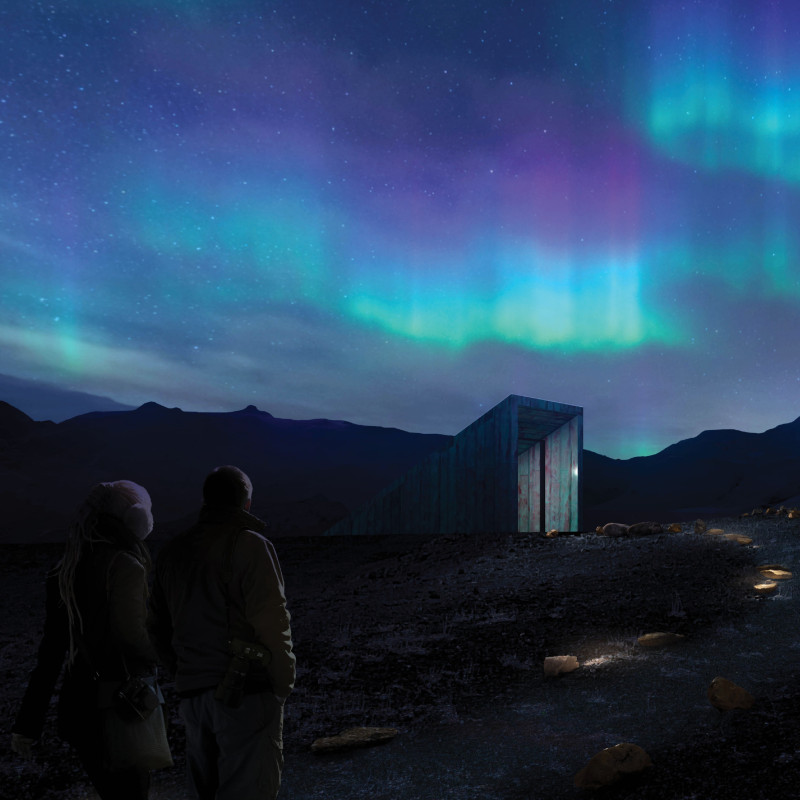5 key facts about this project
Located at the edge of the inhabited world in Iceland, the design finds its place in Vatnajökull National Park, near Lake Mývatn. It creates a connection between the built environment and the natural landscape, drawing from local culture while emphasizing sustainability. Central to the design is a greenhouse that serves as a focal point for the overall layout and visitor experience. The building is partially embedded in the ground, allowing it to blend with the volcanic terrain.
Site Integration
The concept draws from traditional Icelandic turf houses that harmonize with their surroundings. By embedding part of the structure into the earth, the design protects the views from the Mývatn baths and helps visitors immerse themselves in the natural scenery. The elliptical form mimics volcanic shapes, maintaining a visual link between the environment and human presence.
Visitor Experience
The focus on user engagement begins with a small entrance that leads to a mezzanine, providing an elevated view of the interior space. This setup enhances accessibility and allows the building to serve various functions. Areas can be used for dining or community gatherings, promoting interaction and a sense of community among visitors.
Sustainability and Garden Design
A key element is the garden layout, inspired by permaculture practices and French garden styles, promoting ecological balance. The mandala garden wraps around the dining area, establishing a connection between cultivated land and the surrounding environment. This design not only supports agriculture but also encourages biodiversity and soil regeneration, enriching the overall ecosystem.
Materiality
The materials reflect local availability, incorporating aluminum, concrete, and sand sourced from the site itself. The use of burnt wood on the roof echoes the landscape’s scorched areas and reinforces a visual connection to the surroundings. Copper cladding on the entry gate provides a distinctive detail, guiding visitors from the exterior space into the interior experience. The blend of materials creates a tactile quality that invites exploration and engagement with the architecture.






















































